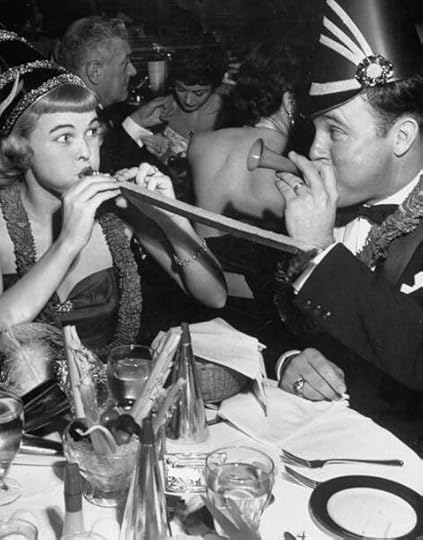Victoria Dougherty's Blog, page 4
May 19, 2023
The Bones of a Creator’s Life
 Mother’s Day 2023
Mother’s Day 2023I’ve been thinking about productivity and creativity this week, mainly because the three primary obstacles to my work-related flights of fancy celebrated Mother’s Day with me this past Sunday.
I cannot even count how many times I’ve had to put away a manuscript – often just when the juices were really starting to flow – because one of my babes had a stomach bug, needed help with homework, or just wanted a hug and someone to talk to. Or the times we spent our vacation days and hard-earned dollars at the beach or at a theme park instead of an interesting locale and potential set piece for a story-in-progress. No role is more conditional than motherhood, if you’re doing it right. On any given day, at any hour, mothers are required to drop whatever they’re doing and tend to the needs of another human(s).
Just today (I’m writing this on Wednesday), my rising college Sophomore came home with a terrible cold, expecting to be treated with the same care she would have gotten as a ten-year-old: hot tea, cuddles, soup, and some company as she curled up on the couch and watched the early episodes of Grey’s Anatomy.
I’m not going to lie. Despite having to put away my plans of getting so much done on the new noir series I’m writing; I was in heaven.
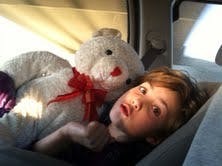 Age 10 sick day. Redux.
Age 10 sick day. Redux.This scene of domestic sum and substance is not exactly what most people envision when contemplating the creative life. Artists are often thought of as rebels and eccentrics with decidedly unconventional home lives. There is some truth in that, of course, and I’d say most arty types are certainly individualists. As I reflect upon my life as a young woman and some of my choices – taking spur of the moment road trips all by my lonesome, joining comedy troupes, moving to a foreign country – a case could be made that I haven’t always followed the way of the common horde.
But to be honest, it never felt that way. In my experience the road less travelled always seemed pretty full to me, and I met my share of likeminded people along the way. That would seem to indicate that this artist’s choices weren’t necessarily rebellious or even original; they were just not in line with what most of my motley crew of Midwestern homies were doing at the time.
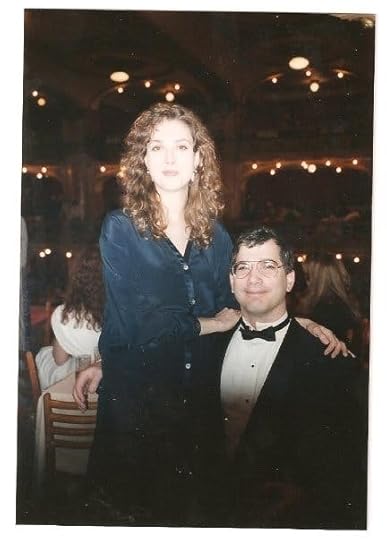 Me with one of my Prague homies during “Ball Season.”
Me with one of my Prague homies during “Ball Season.”Those flights of fancy way back when – the literal and figurative ones – fed my imagination, introducing me to places, people and ideas I might never have discovered had I not left home. Even if my home was the vibrant, artsy, gritty, decidedly uncommon and unsafe city of Chicago.
There’s no denying that.
Yet, when I look at the actual bones of creativity, the foundation upon which wild notions and beautiful things are built, I see less of the restless, unruly and defiant nature of the artistic process. The cultivated eccentricity and roaming the world ethos is fun, but it’s only the very tip of the creator’s iceberg. It just happens to be the one the sun shines upon the most, producing a brilliant, celestial glare.
The unsexy truth of it is, being an artist isn’t about being artsy at all. Like parenting, there’s a lot of tedium involved. Hours upon hours of changing, fixing, and refining. It’s a colossal outpouring of love not just for the completed work, but all the small, sometimes microscopic movements that made it. At its core, it’s about possessing a sense of innate curiosity. Nothing more, nothing less. It doesn’t require an unconventional lifestyle or hairstyle. Because it’s not really about the quest for what’s “out there” – the customs, geography and dress that make us different. That can be found in your average Google search.
It’s about the drive and thirst for knowing what’s within and connects us all.
 Three creatives sharing a beer.
Three creatives sharing a beer.The fundamentals of daily life – family, routine, a neighborhood walk, an unexpected interruption – are the massive, invisible base of every imagining. They remind us that the tip of an iceberg on its own would just melt or float away to nowhere in particular.
What we do day to day with the people in our lives does more than just ground us. The byproduct of having to give of ourselves, adhere to the prescriptions of obviously restrictive institutions – like marriage, for instance – is that we are pressured to make important choices, which in turn strengthens our ability to stay a course. We are goaded into reflecting on why a precedent might have become a standard, on the nature of a particular law, the efficacy and importance of manners, the utter necessity of love.
 My wedding and biggest creative engine.
My wedding and biggest creative engine.Of course, there are times when busting through the guardrails is not only called for but feels great! There’s an energy to that; a firework of daring-do. But demands and protocols make us think. They require something of us as individuals that the hilarity of chaos and novelty do not.
And as I look through the content of some two hundred plus essays, dozens of podcasts and video diaries, a book of short stories, seven finished novels, and a partridge in a pear tree, I can’t see a single word or notion that hasn’t been colored by the presence and needs of my family, who are without question the greatest inhibitors of my quietude and freedom. They are the lens through which I make sense of the world and am endowed to have true empathy for the characters I create – even the killers, thieves, players and lunatics.
So, in the spirit of this post Mother’s Day week, as we contemplate all of the things that ground us, even hold us down with what can feel like ropes and chains on some days, let’s take a moment of gratitude. Strictures can be frustrating, even infuriating – it’s true. There are moments when they can feel crushing. But when embraced and properly channeled, they can also muscle us into excellence; take us down paths of insight and ingenuity we never could have imagined while running footloose and free.
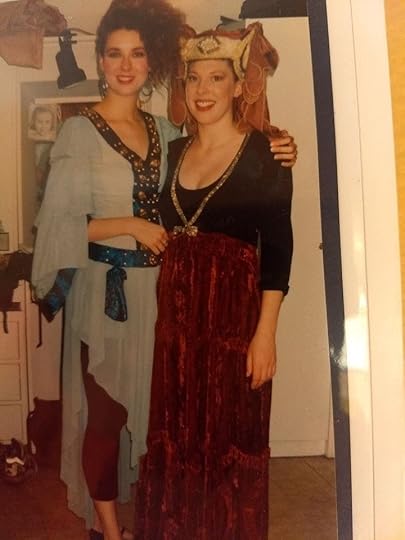 Me, backstage – twenty-three and footloose.Victoria’s Amazon Page
Me, backstage – twenty-three and footloose.Victoria’s Amazon Page
May 5, 2023
Approaching Fiction Like a Scientist
 “Are they from a cloud factory?” That’s an actual question one of my kids asked when they were little.
“Are they from a cloud factory?” That’s an actual question one of my kids asked when they were little.Have you ever listened to an eight-year-old ponder the clouds? Her questions are dreamy, imaginative, big.
Could I pull them apart?
Are they made of God’s breath?
What if we froze one?
Do different types of clouds appear during different seasons?
Can we make them different colors?
Fresh, innocent, curious, boundless questions filled with wonder, joy, and the awe of simply being alive and able to witness a common phenomenon of nature that is available to literally every single person on Earth.
These are also the questions a scientist would pose. A good one at any rate.
 One of my little scientists observing a tortoise shell
One of my little scientists observing a tortoise shellI believe all of us start out as scientists. The challenge is in staying that way. In being able to approach our work, our marriages, our child-rearing and friendships, the way we do business with the world with an open mind that helps us discover the distinct in the familiar and find common ground where there was seemingly none.
As we get older, this takes practice. I’d love to be able to say that a childlike reverence for the everyday comes naturally to me – I’m sure we all would – but it doesn’t. In my own life, I have to conjure my inner child, my essential scientist every day as I gaze upon a blank page. The way I did when I started this missive, having no idea what I was going to write.
It’s that expectation, the very necessity to say something, anything, make an observation, even when we don’t particularly have any inclination to, that is a powerful engine.
It prompts us not only to create but recreate and perfect. Make sure that what we’re doing is on-the-nose.
 Our kids’ home
Our kids’ home And that’s what I’m doing today; what I do with you all every time we convene, in some way or another.
This week, it’s not actually about something new I’m writing, although I am in the process of writing something brand-spanking-new. A return to my first love, my first true endeavor at novel-writing: the historical spy thriller.
If that’s what you’re here for, you’ll hear plenty about that in future missives, I promise.
What I’m fixating on today is something that’s been bugging me for some time. It’s the blurb for my first BREATH novel, and it’s never quite sat right with me.
I don’t know why. It’s a fine blurb, as far as blurbs go, I guess. There’s just something about it that I feel isn’t my best work and that has stuck in my craw.
That’s why, my fellow scientists, I’d like your input. If I may, I’d like to take of your fresh, original minds and see what you think of my rebooted efforts to find the perfect, most compelling summary for the first novel in my epic Historical Fantasy series. One of these is the original blurb, but I’m not going to tell you which one (and I hope you won’t cheat and have a peak on Amazon – at least until you make your decision). With that out of the way, the basic question I have for you is: Which of these blurbs would most inspire you to read this novel?
Burb No. 1
In the lost Kingdom of Rah’a, death spreads like a wildfire, consuming everything and everyone in its path. Sherin, immune to this fatal contagion, is forced to run for her life into the unforgiving desert. As she struggles to survive alone, she attracts the attention of two powerful men: Nif, a nomadic warrior who leads a tribe of rebels hated by the sultan, and Roon, a loyal soldier to the kingdom.
As they fight for their survival against the cannibalism, torture, thievery, and war that blight their region, they begin to uncover their own extraordinary destiny. One that will propel them through time itself – from their ancient civilization to the modern day – as they struggle to save humanity from destruction, and each other from the forces of darkness.
Blurb No. 2
Have you ever felt a strange reverberation inside of you, like something calling out from the depths of time?
Sherin, an orphaned young woman living in the ancient Kingdom of Rah’a, is immune to a devastating contagion that has been ravaging her region. With no family or friends left to protect her, she is cast out into the desert on her own.
In this arid landscape of darkness and death, she encounters two men: Nif, a rebel leading a nomadic tribe and Roon, a warrior fighting for the crumbling sultanry. Their paths cross during a period of turmoil bordering on anarchy. Cannibalism, torture and war are rife throughout the land and alliances change faster than the sand shifting beneath their feet.
But as their story unfolds, something even more ominous lurks. A secret lies buried deep within their souls—an ancient knowledge which will propel them through time and space, from one end of history to the other, granting them an extraordinary destiny that may just be able to save humanity from its own destruction…or ensnare them in the very forces of darkness that threaten everything they hold dear.
Blurb No. 3
Ever felt like you’ve lived before?
In the ancient past, in the now lost Kingdom of Rah’a, a young woman named Sherin finds herself in mortal peril after her family succumbs to a deadly contagion to which she is immune. Alone and afraid, she is cast out into the desert in search of a safe haven. But the plague continues to ravage her region, forcing survivors to band together. Some form haphazard tribes, others violent gangs. Through her wits and courage, Sherin captures the attention of two very different men: Nif, a desert warrior who leads a nomadic tribe, and Roon, a powerful soldier for the crumbling sultanry. As cannibalism, torture, thievery and war blight the region, alliances shift and terror reigns. Despite all of this, Sherin finds herself falling deeply in love with one of her suitors, sensing a mystical energy between herself and the man to whom she is so passionately devoting herself. The forces of destruction enveloping them, an extraordinary destiny begins to unfold before the lovers. It will propel them through history, from the earliest of civilizations to the present day, where they must struggle to save humanity from the same fate that befell their ancient civilization, or risk losing one another forever.
And by the way, “Breath” is on sale for $2.99 right now – but not for long.

April 20, 2023
Our Deepest, Darkest Fears
 (These 3 kids think their mother has lost it. Hint: she has and big time)
(These 3 kids think their mother has lost it. Hint: she has and big time)I’ve had a strange obsession of late. It’s an obsession with a little O, maybe better classified as an unusual interest. Unusual because it seemed to come out of nowhere, compelling me to dive into a genre I have never – and I mean NEVER – had even the slightest compulsion to examine.
That is the uber-gory horror film.
If you’re anything like me – and I suspect you are because you’re here in the Cold – gory horror films are a phenomenon that has mostly passed you by. Disturbing, ghoulish, icky, nauseating, and nightmare-inducing are words that immediately come to mind, and I don’t like any of them.
I have enough problems with a lifelong fear of the dark and piling on to existing phobias wasn’t on my dance card this year, thank-you-very-much.
Then I came across this extremely unpleasant movie poster.
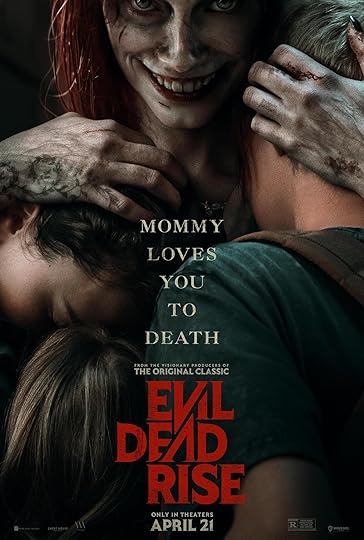 (Who’s scarier, this mother or the Exorcist child?)
(Who’s scarier, this mother or the Exorcist child?)I’ve stumbled over countless horror movie posters in my online browsing career, but for some reason this one made me seek out the trailer. And let me just cut to the chase – it was absolutely godawful terrifying, with a fear factor of ten – no, eleven! I haven’t been this disturbed by a scary movie since I was a kid and introduced to The Exorcist, a film that has been known to keep me up at night to this day.
Now, if you’re sitting here reading this and saying to yourself, “Oh, Victoria – puh-lease. These movies are junk, and you should be paying them absolutely no mind,” allow me to retort.
The Evil Dead franchise is beloved by the horror community, and I have nothing but respect for top-of-the-line genre projects, even when I’m not partial to the genre in question. It’s touted as smart, original, and careful about its legacy. Sam Raimi of Marvel Universe fame (he directed The Spider-Man Trilogy) launched his career by directing the inaugural Evil Dead in 1981. According to movie fandom lore, he begged, borrowed and stole in order to get the low-budget horror film made, and it paid off big time. Evil Dead became a cult hit that spawned a handful of highly rated sequels, plus a TV show, all of which have been universally praised by fans and reviewers alike. There’s simply not a bad Evil Dead film in the bunch, say numerous horror film influencers, reviewers and afficionados.
Apparently, this newest installment and reboot of the series is the creme de la creme, with a Rotten Tomatoes score of 96% – and it hasn’t even officially released yet.
 (An homage to Raimi’s Spiderman Trilogy perhaps?)
(An homage to Raimi’s Spiderman Trilogy perhaps?)While all the third-party validation is nice, the very real, very human reason why Evil Dead Rise has captured my attention is essentially the same reason why The Exorcist did. It’s a story that cuts to our core, tearing asunder in the most brutal and merciless way, the most primal relationship we know: that of mother and child.
From what I’ve managed to cobble together (having not yet seen the film – it doesn’t release wide until April 21st – I’ve watched every clip and trailer I could find), this is the basic premise of the story:
A pair of estranged sisters are reunited when the younger of the duo decides to drop in on her older sibling in hopes of making up. The older sister is the newly single mother of three children (see the first image in this missive) and is struggling financially and emotionally, just managing to keep it together for her kids’ sake. The younger sister, it is revealed, is herself pregnant, single and conflicted, hence why she decided to visit her big sis and reconnect.
Lo and behold, the oldest child, a boy, discovers a mysterious book in the bowels of their Los Angeles apartment building. As the family peruses the book and its bizarre contents, they accidentally unleash some horrid, flesh-possessing demons, which murder the older sister and take over her body. Needless to say, mayhem ensues, and the younger, pregnant sister is tasked with trying to save her nieces and nephew from the wretched and tortuous fate their “mother” has in store for them.
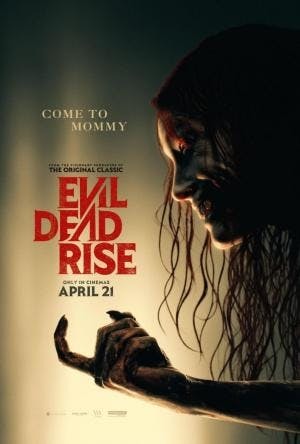
Despite my general disinclination to watch people being bled, disemboweled, burned, slashed, and impaled, I’ve always given kudos to the way the horror genre uses our worst fears to help us examine what we’re made of, forcing us to confront how we really feel in a way that leaves little room for wiggle.
While it’s highly unlikely that we or our mothers will ever be possessed by a demon this gross and malevolent…

the fear of hurting our children, doing wrong by them in some irreparable way, clings like a monkey to the latent thoughts of any caring parent. I distinctly remember finding a drawing my son made of me when he was probably eight or nine years old. Minus the blood and glowing possession eyes, it didn’t look a whole lot different than the creepy picture above. The perspective was the same and he nailed the smile that was barely containing my anger. He even gave me a word bubble that read something like “Go clean your room, blah, blah, blah. Go do your homework.”
“Sorry, mom,” he told me, after discovering that I’d come upon his artwork. “You don’t really look like that; I was just mad.”
Only I did look like that, and I knew it.
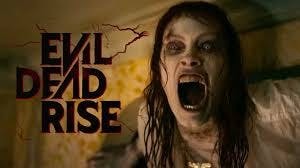 Let’s face it: I’ve looked like this, too.
Let’s face it: I’ve looked like this, too.Haunted, perhaps, by our own memories of parental failings or abuse, or just tormented by the common stresses that plague even the best families, most mothers I know have a tendency to disseminate the arguments they have with their children; perform autopsies on every conflict and impulsive act; burn with regret over every ugly thought. God forbid if one or more of those thoughts is ever vocalized.
We agonize over past missteps, all while fearing for our every future mistake. A mother’s anxiety doesn’t magically disappear once her children are grown and her relationships with her progeny enter a different phase, either.
Those of us who have had experience with a parent who is exhibiting symptoms of dementia, mental illness or an age or illness induced acceleration of personality flaws, tremble for the person we could become once life begins taking away more than it’s giving us.
The pain of watching our mothers turn into people we hardly even know is only eclipsed by the powerlessness we may feel to do anything about it. The sorrow, the guilt, the frustration, the anger, can be overwhelming at times. It’s not uncommon for a daughter to find herself praying, “Please, God, don’t let that ever be me. Don’t let me put my children through that.”
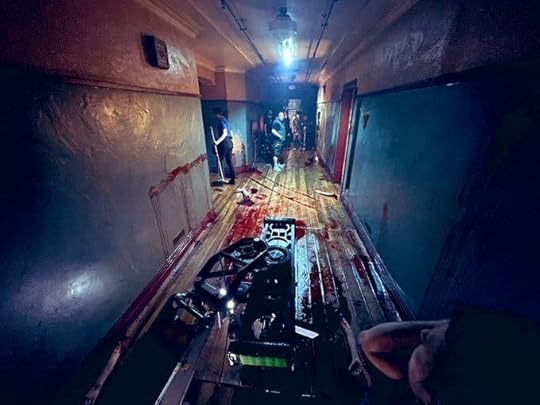 (The bloody set of Evil Dead Rise)
(The bloody set of Evil Dead Rise)Who of us doesn’t want to forever be the fun mom, the loving granny, the sharp-witted crone who’s able to take care of herself, and still be there to offer advice and a shoulder to lean on? The thought of our children not wanting to spend time with us when they’re grown and have their own families is like a shocking twist to what we thought would be a heartwarming story. It’s the fear at the heart of the Evil Dead reboot that has so entranced me.
Because I know from experience, as someone who comes from a deeply damaged lot of refugees, political prisoners, and victims of family catastrophes, that love can perform miracles for sure, but it can’t save every person, every relationship. Not everyone has the strength or insight to rise above the traumas that were visited upon them when they were young. Sometimes, after a life of swatting away demons, such people are finally consumed by them.
That’s a common enough horror story.
 (Chainsaws are a theme in the Evil Dead franchise.)
(Chainsaws are a theme in the Evil Dead franchise.)“Oh, my God, I would so go see that!” my youngest daughter, Josephine, said as she caught me watching yet another clip of the new Evil Dead movie the other day. She’s a fearless horror buff who laughs her way through such films, delighting in every jump-scare, and never once looking away from the blood and guts. I envy her.
“Yeah, I’m not so sure,” I said. “I think I’ll stick to the trailers. It’s not really my thing.”
Josephine wasn’t buying it. She hugged me from behind and gave me a sweet kiss on the ear.
“It’s a movie, mom. And it’s not real. Look, here’s a picture of the actress who plays the demon mother. Isn’t she pretty?”
“Yup.”
“So, there’s nothing to be afraid of.”
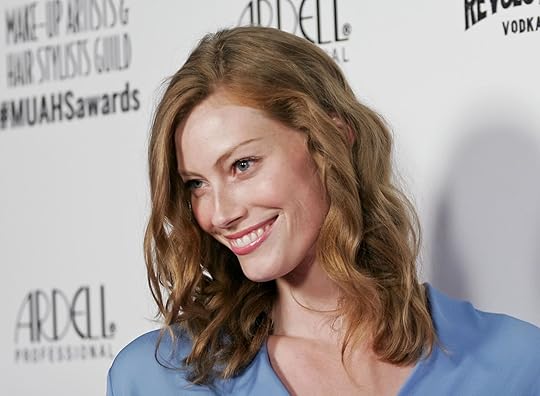 (She does look a lot better without all the blood.)
(She does look a lot better without all the blood.)She’s right.
While it is daunting to contemplate worst-case scenarios through the allegory of a murderous family drama, it’s important to remember that it’s not real. We are not destined to repeat the mistakes of our own pasts, let alone the mistakes of our foremothers. One of the great, glorious things about life is that it is a boutique experience, unique to every individual and circumstance.
But that won’t stop me from looking under my bed for monsters.
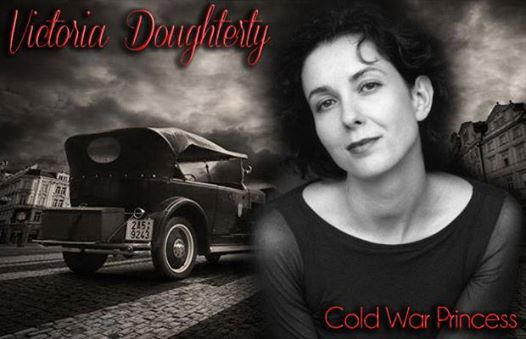
And yes, I do have a perfectly appropriate excerpt from my Cold War Noir work-in-progress:
Savonlinna, Finland, 1959
Ales’s eyes swept the room, taking it in for the first time. Handsome oil portraits of men with curled white mustaches and women wearing pearl jewelry and dour expressions. Furniture made of polished wood and wrought iron. The most striking feature was the bed they’d made plenty use of. It was soft and firm all at once and large enough that it could have fit three grown adults easily. The place sure looked nice to him.
“I don’t stay in hotels very often,” he told her.
“Well, the luxury hotels in India – I can tell you they’re quite something. Too much something. Still, they are what they promise.”
He nodded as if he’d seen them himself.
“How long are you staying?” she asked him.
“I don’t really know.” That, at least, was true. He was beginning to not like that everything he’d told her so far about himself was a lie.
“Well, I’m staying for a while.” The woman stubbed out her cigarette and came back to the bed, crawling to him like a cat. She came close but didn’t kiss him. She’d only kissed him once and hard, immediately after they’d entered her hotel room. The rest of the time they’d spent doing everything but kissing.
“I do hope we can see each other again,” she said.
“I’d like that very much,” he told her. “Tomorrow?”
She placed her finger on his lip, tapping three times as if for luck. “Perhaps.”
Ales licked his lips, tasting where her finger had touched them. He swallowed hard, wanting to reach out and touch her right then, but he didn’t have the nerve.
“My name is Ales,” he said.
The woman’s expression didn’t change. She neither acknowledged nor rejected his formal introduction, as he feared she might do.
“I thought you should know, in case we do get together again.”
“Nice to meet you, Ales,” she said.
“What’s your name?”
The woman leaned back, taking a slow, lavish breath. “I’d like you to call me Mother.”
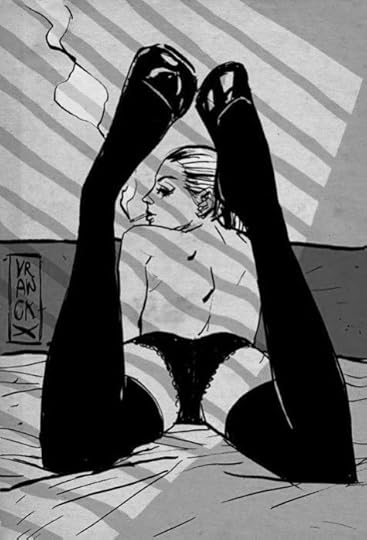
April 6, 2023
Human Rituals, Faith, and Hope for the Future
I rarely write about faith. Mostly because I never want anyone to feel like I’m proselytizing. I don’t like preaching and I don’t like being preached at, but I do relish a great conversation about the spirit – with believers and non-believers alike. That being said, if you do not relish this type of conversation, I won’t be offended if you skip this missive. Nor will I be put off by comments that contravene my own beliefs or experiences. This is an open forum and I welcome all respectful commentary.
Here goes.
 Our Lady of the Angels Monastery
Our Lady of the Angels MonasteryThis has been a week filled with ritual and faith for our family. In addition to its being Holy Week, the countdown to Easter Sunday, our youngest daughter, Josephine, was also Confirmed in the Catholic Church last Wednesday evening. For those of you scratching your heads as to what exactly a Confirmation entails, think Catholic Bat Mitzvah. Essentially, this is a Sacrament that welcomes a young person, as an adult, into the Church proper.
My husband and I sat teary-eyed through what was a beautiful mass and ceremony presided over by a poetical Bishop and eight other thoughtful and friendly Catholic priests. These men were a far cry from the priests my husband and I had grown up with in the 1970s and 80s Midwest. Many of those priests had been Irish immigrants or barely first generation. Some of them, like my husband’s uncle, had been pressured by their family’s into becoming men of the cloth and looking back, it’s not hard to see evidence of their interior struggles: the drinking, the depression, the anger.
But none of those pathologies were on display last Wednesday evening.
What struck me and my husband most about our daughter’s Confirmation ceremony was the palpable presence of joy – among the clergy, the Confirmants, the parents, friends, and community at large. Everyone wanted to be there.
That, too, was something of a shift from when I was a girl. Back then, despite the introduction of trendy guitar services, and a “casual Friday” approach to churchgoing, the Catholic Church was having a hard time keeping up with the world. Changes wrought by a sexual revolution and a feminist movement that opened up historically unprecedented opportunities to women had caught the Church off guard. A few years later, a series of horrendous pedophilic sex scandals would rock our faith’s very foundations, driving away many Catholics who’d already been barely hanging on.
My husband and I were part of that Exodus.
 My childhood parish – St. Francis Xavier Church in La Grange, IL
My childhood parish – St. Francis Xavier Church in La Grange, ILIn our early twenties, Jack and I both left Catholicism in a seething huff and didn’t return until years later, after we’d had children. It was quite by accident that, in our thirties, we stumbled upon a Catholic church that took us in and gave us hope for the future. A place and congregation that helped us see that renewal was possible, even after experiencing what we felt was an unforgivable betrayal.
St. Gabriel’s Catholic Church was a place of warmth, love, inclusion, and thoughtful inquiry. Sunday mass, instead of feeling like an obligation akin to visiting an old aunty that we’d never particularly liked, left us feeling exuberant. Every time we exited through the simple wooden doors of St. Gabriel’s, we were better than when we’d come in, ready and energized about being a positive force in the world, more likely to see the good in everyone and everything.
It was, for these dispirited quasi-agnostics, who had refused to even marry in the Church, opting for our nuptials to be officiated by a dear family friend rather than the requisite Man of God, a surprising development to say the least.
 Our very fun secular wedding
Our very fun secular weddingIn addition to the tangible improvement in our lives that returning to the Church had engineered, one that was unquestionably forward-looking, there was also a homesick aspect to our faith renewal. We had each underestimated how much it would mean to us to reconnect with rituals that had once held great meaning for us and served as markers in our development both as humans and spiritual beings. Habits and rituals of prayer, gratitude, and penance. A stronger commitment to ourselves and others. Practices that helped us grow up and know when it was time to step up – whether we were ready or not.
 Our middle daughter’s Sacrament of the Holy Eucharist (taking her First Communion)
Our middle daughter’s Sacrament of the Holy Eucharist (taking her First Communion)Last Wednesday, as I looked around at my fellow Catholics, I saw people who had, perhaps, been through a similar evolution. Ones who were about our age and would have faced a comparable journey. Who might have fallen away at some point, then returned to a faith that looked and felt different than the one they’d left. As we all glanced from person to person at the cluster of congregants from our region, many of whom were from fairly rural parts, we saw a healthy mix of folks whose people came from Europe and Mexico and Trinadad and Haiti. We saw young people who would have remained on the margins when we were kids – those with visible illnesses and birth defects – being embraced by their peers in way that was completely natural.
This group seemed like a pretty decent sampling of a greater trend, as some had come from parishes that were a couple of hours drive from our town. Catholics are still a fairly small community in the American South, and as a result, we tend to bundle parishes together and hold our Sacraments in one central location. Even that revealed a significant development, indicating not only how much we had changed, but society at large had matured, become more open and accepting.
When my grandparents first arrived in America as political refugees in the early 1950s, they didn’t even consider staying in Virginia, which had been their first stop. Although they shared a warm relationship with their prescribed host family in Arlington and gushed about Virginia and the whole Southern Eastern Seaboard for that matter, they simply didn’t see a future here, and ultimately decided to move on to Chicago.
“As Catholics, we were told no one would hire us in the South,” my grandmother told me nonchalantly.
The 1950s can seem like the Middle Ages at times, and yet it wasn’t that long ago. To me, that’s another example of just how quickly people’s hearts and minds can quite literally and miraculously be transformed. Not over hundreds of years, but the course of a generation or two.
Kind of takes my breath away.
 This cake was made by a Protestant baker.
This cake was made by a Protestant baker.We Papists do still encounter the occasional misunderstanding on this side of the Mason Dixon Line, but these days it’s more likely to be viewed as an amusement than a true offense. Our old babysitter, for instance, was asked by her students if, as a Catholic, she ate human flesh and drank human blood. I’m not kidding here. This was about ten years ago, after she got a job teaching Latin to Middle Schoolers at a local Christian school.
On her first day, she’d planned a “getting to know you” exercise and after her class of eleven-year-olds had finished telling her all about themselves, she asked them if they had any questions for her. One brave boy raised his hand and nervously inquired about something that it turned out had been on the minds of a fair number of these kids…is our new teacher a cannibal?
I won’t even bother to get into the Catholic concept of transubstantiation here (the belief that an officiating priest literally turns bread and wine into the flesh and blood of Christ, although the Eucharistic elements will still appear like bread and wine). The important part is that this awkward episode turned out to be a source of laughter in the end – not anger and tears. A reminder, too, that it would have been unthinkable for that school to hire a Catholic young woman just a few decades ago.
 Me (center), my daughter, Josephine (right), and my daughter’s Confirmation Sponsor and spiritual advisor, Dr. Rafael Triana (left)
Me (center), my daughter, Josephine (right), and my daughter’s Confirmation Sponsor and spiritual advisor, Dr. Rafael Triana (left)I suppose that’s what all of this has come down to for us.
When I get asked why we’ve returned to a faith we don’t always see eye to eye with, and in a world that continues to become more secular, has seemingly debunked so much of what faith in general stands for, I say this: Because it maintains our hope. We’ve watched the religion we were raised in, that we shunned as young adults, stumble and fall in a way that was so epic and dire that my husband and I never thought it could recover – not in the greater world and certainly not in our own hearts.
And yet it is recovering and seems to be making a sincere effort to atone for its own sins rather than merely turning its finger and wagging it outward. There is a plain and credible seriousness among its ranks, an eagerness to make the world a better place.
Speaking only for myself, being a part of it makes me want to be a better human – a good friend, partner, parent and citizen. It urges me see the good in others, the nobility of causes that are not my own, the honor in beliefs I don’t share, even when I don’t want to. I think most importantly, it encourages me to see flaws in myself without the crutch of rationalization.
In short, faith makes this otherwise rational science geek (albeit with a serious creative streak), struggle like hell to believe in and execute to a greater purpose.
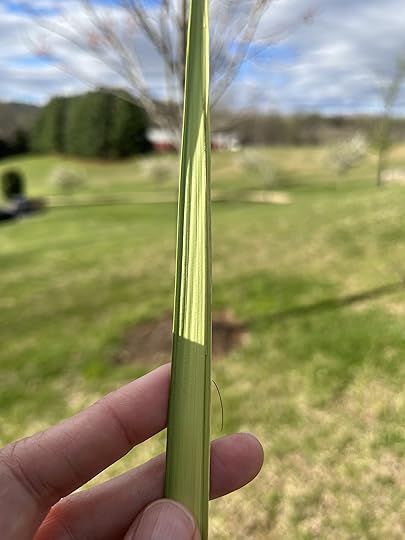 A Palm Sunday mementoVictoria’s Amazon Page
A Palm Sunday mementoVictoria’s Amazon Page
March 24, 2023
The Mysterious Mr. X
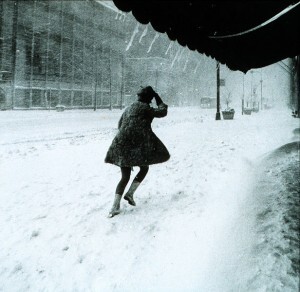
It seems like everybody knows someone who they believe was or is a spy.
Having been living for nearly twenty years within a hundred miles of the cloak and dagger hubs of the USA – Quantico (the FBI and U.S. Marine base) and Langley (CIA) – my husband and I have been privy to no shortage of tales about the sleepers among us. Like this one guy who retired and did a bit of carpentry work on the side. Our local girls’ tennis coach was sure he was definitely a spook. I mean, he’d worked at Langley as an accountant, or so he claimed. Then there was the foreign affairs professor who took a lot of sabbaticals and yet never seemed to write any books. And the new guy down the street who, when pressed about what he did for a living, mentioned that he had a few small business ventures going, but then quickly changed the subject.
Most of these are probably B.S.
The retired accountant turned carpenter-for-hire sure comes off like a bean counter to me and gives pretty good advice in that arena. The foreign affairs professor appears way too compliant to risk stealing sensitive information that could land him in prison, and too socially awkward to pull off cultivating the kinds of relationships that would even get him access to high-level intelligence. As for the small business guy – he might just be living off of a trust fund and didn’t want to admit it in front of a bunch of scrappy self-starters. Or genuinely hated talking shop at the neighborhood barbeque.
But there was one man I not only heard stories about but got to know a little bit, who truly may have been a spy. A man who for our purposes, I’ll call Mr. X.
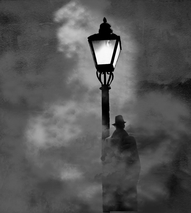
“Do you remember {Mr. X}?” our family friend Albert asked me, when he came to town for his college reunion a couple of months ago. “He died last summer.”
I told Albert that I did remember him, and very well, although I’d only met him once or twice. There was a weight to him, a soulfulness, loneliness. While my encounters with Mr. X had not been what I’d call dark and inscrutable, he was the quiet type, who didn’t give a whole lot away. To be honest, my impressions of our past interactions…were mostly sad. He was a man who knew regret and didn’t flinch about facing it, never rationalized it the way an unfaithful spouse might, saying something like, “I know it was hard, but in the end the divorce was actually good for the kids.”
Now Mr. X was no longer among us, and I felt a genuine sense of loss.
What lingered like a valley fog from the few times I’d found myself chatting with him was the way he’d talked about his personal life, or lack thereof. How he’d never thought he was ready for love and had watched good women come and go. How he’d tried to start over a couple of times, but realized it was too late. He’d made his bed. There wasn’t any self-pity in these revelations, nor any detail. Most of the time when I found myself in his company, he seemed content just to let other people talk. And to listen. I always got the feeling that he really listened.
“What bothers me is that he died alone,” Albert said.
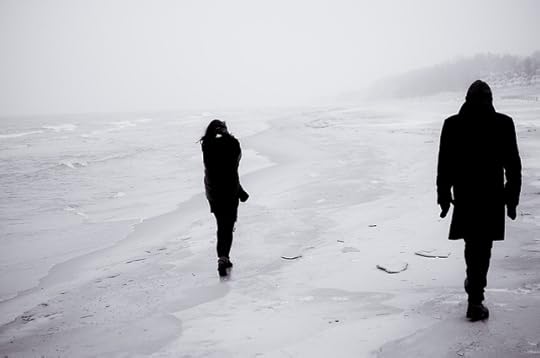
Our friend disclosed that he’d been thinking about Mr. X a lot. About their history together. The two men had been very close once, having been in the same fraternity at University of Virginia. They’d both studied law and had stayed in touch over the years, even between college reunions. In fact, Albert had called Mr. X on the day his body had been discovered, wondering if he was planning to attend the most recent one. The moment his niece answered the phone, he knew, Albert told us. Nobody else ever answered Mr. X’s phone.
“He was a natural leader, you know,” Albert said. “He never used force to get his ideas across, although he was strong and athletic.”
Albert went on to describe Mr. X’s unwavering moral code and deep sense of honor. How much women liked him and professors held him in high esteem. He also described how Mr. X had fallen off the radar for a while after graduation, and resurfaced intermittently, in between to ambiguous consulting jobs or business opportunities in countries like Azerbaijan, Kyrgyzstan, Moldova, Romania, Ukraine.
Then, there were the injuries, which had him coming back to the U.S. to recuperate at times for months on end, before he picked himself up and went abroad again.
“They weren’t the usual broken ankles from a ski trip,” Albert said. “They were strange, like he’d been beaten up. He’d say he fell or was in an accident, but it never seemed right. Like the battered wife who claims she tripped down the stairs one week, then walked into a door the next. There was always something.”
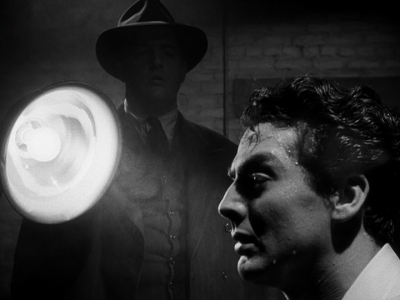
Albert was troubled that hardly anyone had shown up to Mr. X’s funeral, too. “Only six people came, and that included me and my wife and son. He was popular at school, always there to help when you needed him, and this was the turnout. Not even the rah-rah guys from our fraternity came to pay their respects.”
It didn’t surprise me, but then again, I hadn’t known Mr. X when he was a college student. The man I had known – however little and however briefly – had seemed an orphan in this world. I couldn’t imagine him with a mother and father or siblings and was even surprised to hear that he had a niece who was attuned enough to his comings and goings to discover his body.
“He should’ve married and had kids,” Albert said. “You need family in this world.”
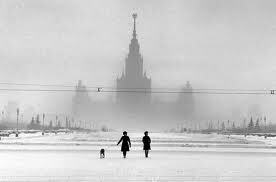
Maybe Mr. X really was just an emotional ne’er-do-well, who’d taken on adventurous business consulting opportunities in favor of settling down, and eventually all of that had caught up with him. His curious injuries, I’m sure, could be explained away by a competent physician.
And people change, after all, sometimes becoming estranged from friends and family as they grow older. It’s not a trait that can only be attributed to those who enter the world of espionage. Even an affable frat guy like Mr. X could have had a stranger lurking within him all along. One who only needed permission to surface.
But none of this seemed to be enough to explain how a man who reeked of depth and dignity could have ended up so far from where he’d started – and without help from the usual accelerators of doom: sex, drink, and drugs.
In my estimation, the reason why Mr. X seemed like a plausible spy was more ambiguous than the way he’d lived his life – always on the move, reticent about revealing too much, unable or unwilling to make a commitment to anyone. What stuck in my craw, was that unlike the Langley accountant, Mr. X hadn’t retired and started making furniture. He hadn’t moved on to something else or held on to what he had. Here was a man of intelligence and charisma, good looks and good character. He’d started off his young adult life by going to an excellent school, where he’d joined a prominent fraternity and earned the respect of its members, who all thought a guy like him was going places.
In short, he’d been a man of promise.
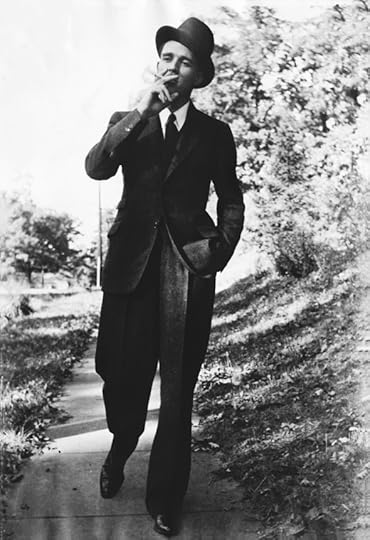
Yet, at the end of his life, no one really knew Mr. X. Not even Albert, who’d always been the one to initiate contact, who’d tried to help him meet a woman and relaunch his life, who’d flown his family from their home in San Francisco to Portland, Oregon, for Mr. X’s funeral. Almost everyone but Albert had long since stopped trying to know him, worn down by the unreturned phone calls, the far-flung assignments, the strangeness, otherness of Mr. X’s life choices.
If he really was a secret agent, I’d like to think it had all been worth it for Mr. X – the injuries and clandestine missions. They may have meant a great deal to the young men who fight in our wars, the people who are victims of true oppression, and the world at large. Even if they did ravage the life of the man who undertook them.
But the truth is, the spy is the ultimate unsung hero, so we’ll never know.
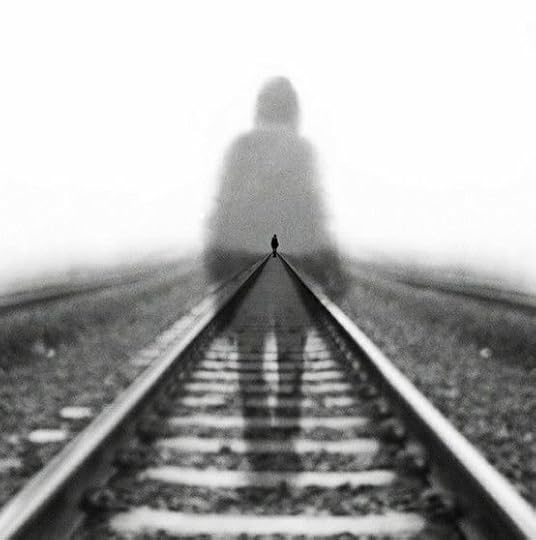
If you have a taste for some fictional spies of my making…
The Hungarian in trade paperback is on sale at Amazon:

February 23, 2023
Go to St. Louis
One of my husband’s old friends from St. Louis visited us last weekend. Matt is razor-sharp and funny. A geographer by trade, and former Catholic school boy who has become deeply immersed in Chinese medicine and Eastern religions. In fact, apart from wanting to visit with his old buddy Jack (my husband), his interest in spiritualism is what brought him to Virginia. There was a Wu Mastery seminar (I hope I got that right) relating to Eastern philosophy at a local yoga retreat, and Matt had been invited.
 (This isn’t Matt.)
(This isn’t Matt.)What was great about the visit wasn’t just that we got to share a meal and reminisce with a great guy that my guy has been hanging around with since the Seventh Grade, but that in welcoming Matt into our house, we got the whole city of St. Louis as a bonus.
Being from St. Louis is a trip. I love the place! I should qualify this by saying that I am not from St. Louis, although I did live there for a number of years around the time my husband and I got married. Because Jack’s from St. Louis, and we’re both from the Midwest, I’m sort of St. Louis-adjacent and have been welcomed into the tribe and let in on all of its secrets and idiosyncrasies – even if they sometimes have to be explained to me like I’m a kindergartener.
What is truly wild about the “Gateway to the West,” as it is called, is that it’s not just a city, it’s a world unto itself. One that’s only vaguely interested in your world, if you live outside St. Louis. Despite the entire metro area boasting some 2.8 million residents, it feels like a small town and everyone who grew up there knows each other through someone, somehow. And I mean everyone.
 (Jack (left), me (center), and Matt (right), years ago in St. Louie)
(Jack (left), me (center), and Matt (right), years ago in St. Louie)Part of the reason for this is that St. Louis is generally a city that people who aren’t from there don’t move to and people who are from there don’t move away from. It’s a place that’s of St. Louis, by St. Louis, and for St. Louis. That seems rare in this day and age. Especially for a city of its size.
You can grab a random stranger on the street by the arm, and within twenty-two seconds have established that you know at least three of the same people, have family in each other’s neighborhoods, attended the same wedding ten years ago, and got your dog from the same breeder.
The local TV anchors, disc jockeys, and sports announcers are treated by St. Louisans as on par with global celebrities like Arnold Schwarzenegger and Prince Harry. St. Louis products and businesses are elevated in a similar manner.
In my humble opinion, that’s the way it should be.
 (“Toasted Ravioli” is an institution in St. Louis.)
(“Toasted Ravioli” is an institution in St. Louis.)When we bought a minivan a few years back, my husband slapped a KSHE 95 sticker right and center on its bumper, announcing to the world that we were fans of St. Louis’s oldest classic rock-n-roll radio station. I was confused for a number of reasons. The first being the most obvious – that we lived in Virginia and at that point had for over a decade. Also, my husband has a particular disdain for bumper stickers. We don’t do political slogans, Life’s a Beach vacation magnets, proclamations of how much we “heart” our Boston Terrier, nothing.
“And you hate KSHE,” I said, because he’s also a music snob who favors jazz over classic rock. Who favors jazz over everything, actually.
But KSHE is legendary in St. Louis. Only on KSHE can you hear songs like Missouri’s Movin’ On, and the more obscure tunes from Boston’s Don’t Look Back album on a regular basis. Every Sunday at noon, long-time DJs Mark Klose and John “U-man” Ulett have a one-hour show called “The Vinyl Exam,” where they play songs from their favorite rock-n-roll albums of all time. Since they’re both creeping up on some fifty years at KSHE, their favorites are time-honored selections like Heart’s Dreamboat Annie and REO Speedwagon’s You Can Tune a Piano, but You Can’t Tuna Fish. And they can talk about them with an encyclopedic knowledge.
Truly, no algorithm could come up with KSHE’s particular brand – a format and playlist so committed to maintaining its roots that it actually sounds original to outsiders yet remains beloved by legacy listeners who are just thrilled that it hasn’t changed one bit.

And within weeks of driving around with that KSHE pig on the back of our minivan, Jack’s real intentions became clear.
Wherever we traveled, our KSHE bumper sticker attracted notice from past and current St. Louisans, always prompting a conversation and the inevitable, “Oh, my God – you went to Chaminade High School!” and “Yup, my cousin’s parish was St. Ann’s,” and “You knew Dewey? Last time I saw him was at Ted Drewes and son of a bitch had a Cubs cap on. Yeah, his wife’s from Chicago, I guess.”
Even when we moved to Virginia, it turned out our next-door neighbor had deep family connections in St. Louis, and yes, my husband knew her cousin. They’d gone to the same High School for the love of God. Didn’t even need the KSHE bumper sticker for that one.

But I digress. Sort of.
The point is, St. Louis is more than just a city, it’s a mythology. People from there talk about it the way the classical Greeks talked about their gods. In an up close and personal manner that mixes pride, gossip, mean jabs and hero worship. That assumes St. Louis is the only place in the world really worth talking about.
And from the moment Matt sat down in our living room, he and Jack fell right back into that way St. Louis lifers have of talking. The one that seamlessly mixes personal tales with history and lore.
“Three of my brothers dated four of your dad’s sisters,” Matt told our kids, captivating them with the peculiar dynamics of big families in small neighborhoods. The way everyone dates each other, marries each other, loves and hates each other.
 (These are just 6 of the 8 Dougherty siblings at a recent family wedding.)
(These are just 6 of the 8 Dougherty siblings at a recent family wedding.)As the stories continued, the ordinary and the extraordinary jumped and jumbled like a game of double Dutch. Although I knew most of the characters involved, even I had a hard time keeping them straight.
“Yeah, you know my brother was married to Jon Hamm’s sister for like twenty-five years, right?” Matt said.
I didn’t know.
“Yeah. He came in for a wedding a while back and my mom comes up behind him and messes up his hair. Eighty-nine years old and she’s like ‘Hey Jonny!’ You know he went to Burroughs.”
The footnote of where Jon Hamm went to High School – Burroughs – is important information for a St. Louisan. “Where’d you go to High School?” is a stock question in reference to any local you’re talking with or about. A St. Louis native will never ask you where you went to college, because the focus is on the St. Louis experience. It’s why the Harvard grad, who just has to let you know his alma mater within sixty seconds of meeting you, will get absolutely no respect in The Lou. But if he said he went to St. Louis Priory School, that would be saying something.
From a civic perspective, this makes perfect sense. The metro area High Schools all have their very own brands that they’ve spent decades refining. Ones that tell a lot more about a person than just whether they’re smart or rich. They explain what their parents were like, and often what their parent’s parents were like, what their character might be, their talents and interests, even whether they’re attractive or not.
So, the mention of Burroughs telegraphed that Jon Hamm was ok; also, that he was probably progressive, bright, and the rare type of local who was most likely to leave St. Louis.
All of which, at least on the surface, appear to be true.
 (J.H. Senior photo, I believe.)
(J.H. Senior photo, I believe.)I should also point out that the mention of the famous actor, which could be an epic name-drop in any other context, was treated simply as one feature in a larger, richer collection of St. Louis trivia. My husband had never even mentioned to me that Matt was related to Jon Hamm by marriage during all the years we watched Mad Men together. But he did tell me that Jon was from St. Louis and went to Burroughs. See what I mean?
But the most dramatic and truly sensational tale told last Saturday night was without question the one of the exorcist boy of St. Louis. Yes, the story of the possessed kid made legendary by the 1973 film The Exorcist, starring Linda Blair, was actually based on a boy whose exorcism, in 1949, took place only a few minutes’ walk from where Jack and Matt grew up.
It was at a place technically known as St. Vincent’s, but that locals called the Old Normandy Hospital; an imposing, castle-like structure founded by the Sisters of Charity in the mid 1860s, for the treatment of nervous and mental diseases.
 (No, thank you.)
(No, thank you.)“It’s now a nursing home, but man, we used to sneak in there all the time in High School, back when it was still abandoned,” Matt said.
There’s the version of events you can find in a basic Google search and there’s the one I’m going to tell you, as told to me by Matt. That one is steeped in community lore that I believe tells a more complete story. By complete, I don’t necessarily mean true – although it may be. I mean a story that reveals a lot about the people telling it and spreading it. It shows us their hopes, fears and nightmares; tells us how they feel about who they are, what they think of their friends, neighbors, mentors, and the architecture around them.
“That place is cursed,” Matt said, again referring to the exorcist hospital near their homes. “Remember that time, there was like twenty of us going in there to drink, and man, it was traumatic.”
“Horrible,” my husband concurred.
They were climbing over an eight-foot fence to break into the old hospital when in a freak accident one of their friends, Christine, got her class ring caught on a spire. She lost her footing and fell to the ground, tearing her ring finger right off.
“We took her to the new Normandy hospital, which is like taking her to a butcher shop, but what choice did we have?” Matt continued. “And when we get there, the doctors are like, ‘where’s the finger?’ And we didn’t know we were supposed to bring it. So, they give me and Whitey a box with ice in it, and we’ve got to go back to that creepy place and find it.”
They were successful, plucking the appendage out from under some bushes, and Christine’s finger was ultimately re-attached. Unfortunately, that didn’t take, and it had to be removed again – just more evidence that the place was plain evil.
“Then, when I was a Freshman at St. Louis University, I took a class from Father John Walsh,” Matt said, almost in a whisper. “We got close, he and I, and he was so cool. I mean he used to protest with Jane Fonda and sh*t. Anyway, he was best friends with the priest who did the exorcism and knew all about what really happened and told me the whole story.”
 (The house where the kid stayed, and parts of the exorcism took place.)
(The house where the kid stayed, and parts of the exorcism took place.)According to Matt, Fr. John Walsh claimed that the possessed boy’s tongue would stretch three to five feet out from his mouth and slap the priests in the face while they were reading from the Bible in their efforts to cast out the demon.
“That part wasn’t in the movie, but Fr. John said it happened a lot and freaked the sh*t out of everyone there. I mean, he didn’t say ‘freaked the sh*t,’ those are my words. But it was really disturbing.”
Obscenities would appear on the boy’s body, as well as images, like a pitchfork, and they looked to have been scratched into his skin with a knife.
“Blood would appear like he’d been cut, stay there for hours, then just disappear without a trace.”
Like in the movie, furniture would shake and levitate, the boy’s voice would change, sounding low and demonic, and he would cackle wildly and frequently.
“Words in Aramaic or some other old language, I don’t remember which one he said it was, would appear in blood on the walls of the hospital during the exorcism. Even years after, they could never bring the temperature up to normal in that place, no matter how much they cranked up the heat. Sometimes, the walls would just start to sweat for no reason, and the words that used to appear in blood would appear again, but in the damp of the plaster – like if you write with your finger on a foggy window.”
The fact that the building had been sold, remodeled and turned into a nursing home just added more fodder to the urban legends surrounding it. Especially since The Exorcist III was set in a nursing home – and written long before the old Normandy hospital was turned into one. That fact itself seemed prophetic, in the worst sort of way.
“The end of the exorcism wasn’t as dramatic as the film. I think the priests just wore the demon out and it left and never came back. The kid went home to Maryland after that and had a normal life.”
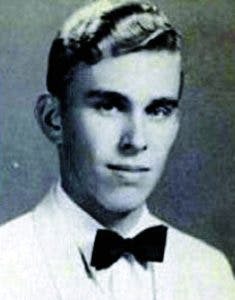 (Ronald Hunkeler, the real exorcist kid.)
(Ronald Hunkeler, the real exorcist kid.)The whole Maryland connection threw me for a loop, as we’d just spent the better part of an hour establishing that the story originated down the street from where Matt and Jack had grown up, and not in the Washington DC metro area, where the film had been set.
“I thought the boy was from St. Louis,” I said.
“Well, he had close relatives in St. Louis – grandparents, I think – but the way he got there to be exorcized was really f*cked up. When the kid started having all these problems and acting like a psycho, they took him to Georgetown Hospital at first to be evaluated. They did all of these tests, and while he was there, these welts started to appear on his body, like this really bad rash, all clearly in the form of words. You couldn’t mistake it.”
“What did it say?” I asked.
Matt adjusted his hat and scratched his beard. He leaned forward and looked me right in the eyes.
“Go to St. Louis.”
 Go Cardinals!
Go Cardinals!
February 9, 2023
Community: The Other Kind of Love Story
 (Team spirit!)
(Team spirit!)In honor of Valentine’s Day, I decided to shake things up and not write an essay about lovers, like I usually do. Instead, I wanted to expand the circle, make those lovers of essays past take their eyes away from one another for a little while and look out and around them at their community.
These days, I think a lot of people have a complicated relationship with community. Their own as well as the concept as a whole. I know I do.
Some hold only a few people very close and find interacting in larger groups anything from discombobulating to downright traumatic. Others have more of an abundance mindset when it comes to mixing with people at large. They thrill to meeting new neighbors, joining clubs, playing on sports teams, and attending functions of all sorts, from intimate dinner parties to corporate Christmas shindigs to fancy to-dos.
Wherever we fall on the community spectrum, most of us agree that the absence of connection to a whole isn’t good for us. Doctors caution us that people who do not feel a strong sense of community live shorter lives, are more likely to develop dementia, and are less happy overall. Our common experience shows us that our circles can help keep us from our worst impulses – pessimism, miserliness, inflexibility, melancholy. The people we invite into our lives, apart from enriching us with their interests and making us feel a part of something bigger, can also keep us from making grave personal or financial errors. They help us draw inferences about our behaviors or just outright tell us when we are unfairly picking on our spouse, not giving our children enough room to grow, or falling for someone who does not have our best interests at heart.
All of this sounds rather complicated, doesn’t it? To further muddle this issue, many of us are in the process of a huge shift in how we experience community in almost every facet of our lives.
 (I can think of few expressions of community that are greater than the school play)
(I can think of few expressions of community that are greater than the school play)That is, of course, thanks at least in part to Covid and the new era of work-from-home it has ushered in.
While a Godsend to some, I’m sure it’s been a real stressor to others. A boisterous household can be a challenging place to have a Zoom call with your boss. A marriage built on a lot of personal space can suddenly feel claustrophobic. I’m well aware of the joys and pitfalls of work-from-home life, as my husband and I have been well ahead of the curve on this one. As writers, we’ve been living a post-Covid life for almost twenty years now – working from a home office, although rarely allowing ourselves to do so in our pajamas.
“We’ve got to keep our dignity,” my husband has always insisted.
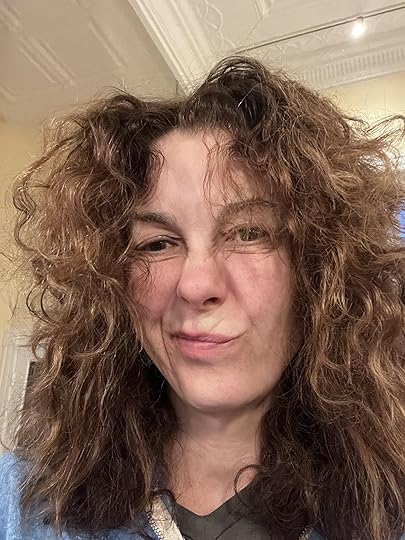 (I admit I drop the ball sometimes)
(I admit I drop the ball sometimes)That’s why it remains to be seen how this massive change in the way we do business and experience community at large will play out long-term.
Don’t get me wrong, I’m not one of those people who wants to keep all the goodies for myself. There are plenty of great things that come from working from home and I don’t begrudge them to anyone. You save a lot of time not having to commute to work, you can be more available to your children, you don’t have to spend quite so much money on office clothes and coffee and babysitters. I’m glad more people get to experience this and at least see if it’s for them.
 (My husband singing for his supper in our kitchen)
(My husband singing for his supper in our kitchen)Nor am I a gloom-and-doomer who is convinced that our social skills will inevitably atrophy, fomenting miscommunication and mistrust on a massive scale now that so many of us are hanging around the house all the time. Or that without the dark mistress of a workplace whipping us into shape, too many of us will lack the discipline to follow through on our commitments.
It’s important to remind ourselves that this working from home thing, after all, is not without historical precedent.
When we were still an agricultural society, I imagine we spent much of our time at home and with our families – working the fields alongside our children, chopping wood, hand-washing laundry, cooking. We might have left for a few hours or days to sell our wares at a regional market or made our way into town to purchase our needs. For purely social interactions, we got dressed up for a gathering at a neighbor’s place, maybe a dance at a nearby barn. We would have definitely experienced community at church on Sundays. But for the most part, our days would have been spent in the company of blood relatives, with a smattering of non-family helpers pitching in. A visitor here and there.
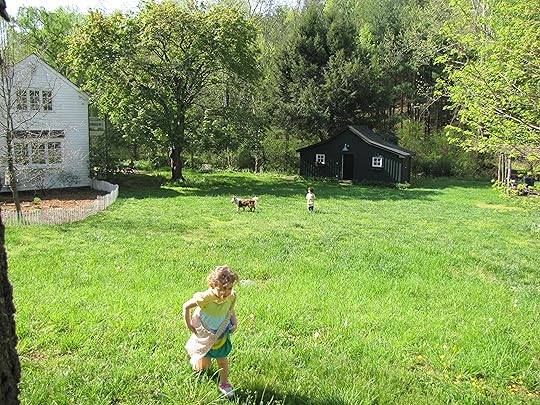 (An Easter egg hunt at our neighbor’s place some years ago)
(An Easter egg hunt at our neighbor’s place some years ago)And this was in the days long before social media, so the only way to see people outside of this intimate circle was to actually go and see them or for them to come see you.
Yet community thrived. In fact, when the siren song of the city began to play, luring young people off their land and into factory jobs or corporate jobs, there was a lot of hand-wringing about how that would affect the family.
Turns out the worrying wasn’t entirely for nought. Fathers did spend a lot more time away from their families, and later, mothers entered he work force and stayed away for much of the day, too. Kids started going to preschool instead of staying at home until kindergarten; they were often watched by an aunt, granny or other minder instead of their moms. Or they went to daycare. Some children, if they were old enough – in my day that meant as young as seven or eight years-old – could come home straight from school, make their own snack, and just fart around alone until mom and dad got home. There was a pretty loose honor system in place, with kids insisting to their parents that yes, of course, they’d done their chores and finished their homework. And no, they hadn’t spent the whole time watching TV.
To this latch-key kid, it was heaven.
This new way of life did create opportunities for other ways of experiencing community, too. Many of us became close to colleagues, finding our people and culture at the office. The watercooler huddles, after work happy hours, and industry conventions took the places of sewing circles, Moose Lodges, and church socials. Marriages were broken and marriages were made. I know so many people who fell in love at work. In fact, since the MeToo movement has prompted many businesses to enforce policies that strongly discourage dating at the office, I’ve often wondered how in the world people were even going to make prospective love connections at all.
You can tell I’m from the days before online dating.
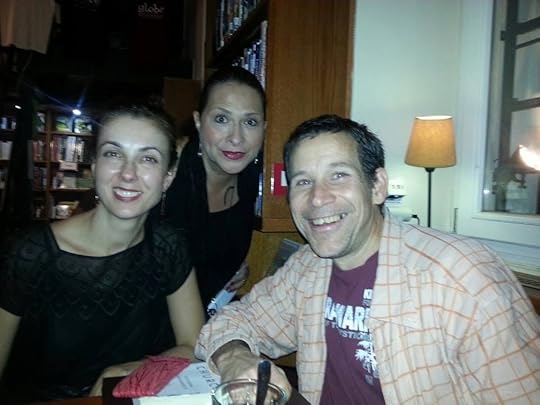 (A rare, totally platonic work event)
(A rare, totally platonic work event)But as I watch the wheels turn, and the adaptations commence, I continue to feel optimistic about all of this community stuff. Not because I’m so comfortable with change and handle it oh, so handily. I don’t. I’ve been dragged kicking and screaming into the technological age, to every new city I’ve lived in, to contemporary fashion choices for the love of God.
But if there’s one thing that I’m sure of. Reasonably sure of anyway. It’s that community, like romantic love, is such a deeply ingrained necessity for us humans, that it will survive and thrive no matter how we mix it up. We may very well stumble through this change, and it won’t always be evident that the transformation will be an overall good one, but we’ll get there.
That’s why I want to encourage us all – even the most introverted of introverts – to raise a glass with a friend, hand out chocolates at our book club, or give a rose to a co-worker this Valentine’s Day. Ok, maybe not a co-worker – I wouldn’t want to get anyone fired. How about just this simple directive: Let us give proper attention to the people with whom we interact with more casually, or just less frequently, and imagine ways that we can bring them closer.

January 26, 2023
Say Anything: Here’s a Conversation You Don’t Want to Miss
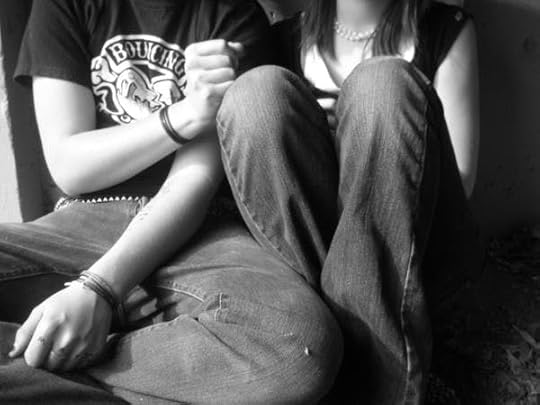 Making a true friend is like winning the lottery.
Making a true friend is like winning the lottery.Those of you who have been around here for a while are probably aware that once a year, I have a long, complex, meandering and above all warm and open conversation with my friend Ricardo Lopes (aka The Dissenter) on his wonderful podcast.
“A single conversation across the table with a wise man is better than ten years mere study of books.”
–Henry Wadsworth Longfellow
His is a science-focused podcast – social science, psychology, medicine, physics, environment, a bit of philosophy – he runs the gambit. Ricardo has a breathtaking scope of knowledge, able to ask poignant, informed, and often counterintuitive questions of his guests, regardless of how specialized their area of expertise. A fiction writer like me may seem like a very odd addition to his usual cast of characters.
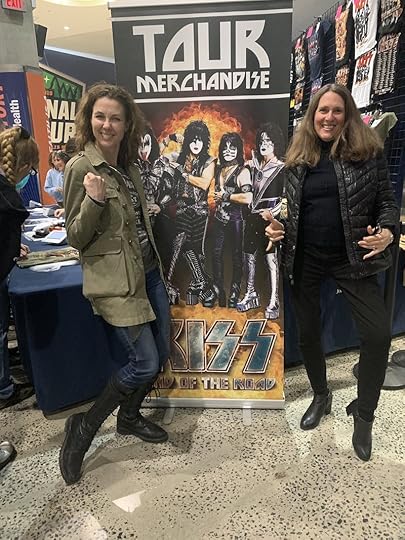 Ricardo’s esteemed guests probably have more highbrow tastes.
Ricardo’s esteemed guests probably have more highbrow tastes.But Ricardo isn’t just a left-brained kind of thinker. He loves literature, art, Manga, poetry and film. I’m sure I’m missing some of his points of interest. And he can talk about them with passion and proficiency. He is that rare individual who has strong opinions yet is able to change his mind. In fact, learning something new, evolving, even admitting he was wrong, is a thrill for him.
“My idea of good company is the company of clever, well-informed people who have a great deal of conversation; that is what I call good company.”
–Jane Austen
At one point we discussed the intersection of science and fiction. How both disciplines are based on making something up – either a plot or hypothesis – and following that to a conclusion that resembles some kind of truth. It was fun to uncover an insight that in retrospect seemed obvious…that creativity has a skeleton that can hold together the guts of an infinite variety of subjects. It gave us an awareness of not only the matter at hand, but of why we became friends in the first place.
“Each friend represents a world in us, a world not born until they arrive, and it is only by this meeting that a new world is born.” —Anais Nin
I guess all of this can also be said of any meaningful exchange, but in the interest of presenting ours’ to an audience, Ricardo and I always try to approach this yearly talkfest with a raw and delicate jumble of humility, honesty, knowledge and hopefully courage.
I hope we succeeded.
I can say with some confidence, at least from our perspective, that our one hundred seventy-minute-long conversation never lagged or lulled. Every topic we tasted, chewed-up, spat out or swallowed whole, seemed organically to lead to the next. These included, but weren’t limited to psycho killers, human beings merging with A.I., comic book villains, the boring nature of nihilism, the thrilling, complex and literary plots of great Manga stories, trigger warnings, and even the state of free speech. Phew!
“I love people. Everybody. I love them, I think, as a stamp collector loves his collection. Every story, every incident, every bit of conversation is raw material for me.”
—Sylvia Plath
As you listen, you may find yourself nodding along in agreement, or slamming your fist into your desk and shouting, “Wrong! Wrong! Wrong!” Either response is beautiful, perfectly natural, and exactly the sort of reaction a nuanced, good-faith conversation should invoke. I welcome any and all comments, as long as they’re made respectfully.
Without further ado:
January 12, 2023
Time, Resolve, and the Pursuit of Excellence
 Happy New Year!
Happy New Year!While I’m not one of those people who thinks anything actually changes between 11:59 PM on December 31st and 12:01 AM on January 1st (assuming those people even exist), I definitely believe that the ways in which we mark time impact how we experience its passage.
Every New Year, I am made painfully aware of the fact that I’m at war with time. I fight for more of it, to do more with it, to slow it down, to speed it up, to use it more wisely.
A big fan of resolutions, it is sobering for me to look back and realize that nearly all of my bold intentions for New Years past are somehow related to time.
Take this year.
My New Year’s resolution for 2023 revolves around the pursuit of excellence. I got the idea on Twitter, of all places. A Tweet thread from a Tom Cruise enthusiast detailed the superstar actor’s obsession with getting things just so, making my heart and mind burst in a firework of inspiration. And showing me all the ways in which I have fallen short in my pursuit. Not accomplished what I want in a timely manner.
Here’s the thread:
MI:ROGUE NATION (2015) Cruise clung to the door of a military plane that hit 260mph and flew >1000 feet in the air. He wore a body harness that was roped to an aluminum plate in the plane. You see the rope in the raw footage (bottom). Cruise says he “was scared shitless.”
 “Scared shitless” doesn’t even begin.
“Scared shitless” doesn’t even begin.MI:FALLOUT (2018) Cruise did a HALO (high-altitude, low open) parachute jump out of a C-17 military transport plane. It’s a 25,000 foot jump. Absurdly, Cruise did >100 jumps on a semi-broken ankle and had to get within exactly 3ft of a parachuting camera man to get the shot.
 Yup, that’s really him.
Yup, that’s really him.MI:2 (2000) In the first MI sequel, Cruise climbed a 2,000 foot Utah cliff with only a safety rope (dude really likes extreme climbs). Director John Woo brought on an expert climber to do the stunts, but Cruise did it all (incl. an insane 15-foot gap jump between 2 cliffs).
 Right before the 15-foot jump. Total savage.
Right before the 15-foot jump. Total savage.A FEW GOOD MEN (1992) Cruise went up against one of the greatest actors ever, Jack Nicholson. After an intense courtroom scene, he worked up the balls to ask Nicholson if he ordered “the Code Red”. Might be the craziest stunt ever.
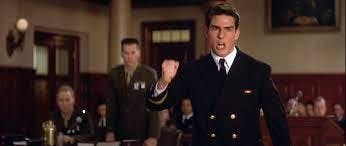 Apparently, he improvised.
Apparently, he improvised.MI:FALLOUT (2018) Cruise piloted a helicopter solo at low altitudes while doing insane stunts (a “360 downward spiral”). All while controlling the camera. To prep, he put in ~500 hours of helicopter training over a one-month period.
 All while controlling the camera!
All while controlling the camera!MI: DEAD RECKONING PT. 1 The next MI will come out in July 2023 and the studio just released a featurette of Cruise’s motorbike cliff jump. He did 6x takes of the scene! Cruise is legit running out of wild stunts to do (him and Nolan need to talk about a real A-bomb).
 This man is 60 years old!
This man is 60 years old!With a combination of awe and exasperation, I look at people like Cruise, at some of my writer friends who are just killing it, at my own past self for heaven’s sake, and think, “Why aren’t I doing more, faster, better?”
If I’m to be honest with myself, there is a thrill to this kind of self-flagellation that’s not unlike chasing the dragon. It’s a cycle well recognized by the drinker, the gambler, the player, even the pathological liar.
You try, you fall, you get back up, you take on even more, fall again, get back up.
That dragon you’re riding looks back at you and whispers, “What you want is just around the corner, can’t you see? All you need is one more whiskey and you’ll be a fascinating guest, one more roll of the dice and you’ll be a millionaire, one more beautiful woman and you’ll be worthy and loved. One more lie, and you’ll finally be seen as the person you want to be.”
Or in my case, one more possible world. One more story, and you’ll be a real writer.
 Frank Cheyne Pape’s most excellent rendering of chasing the dragon.
Frank Cheyne Pape’s most excellent rendering of chasing the dragon.To a proponent of self-care, any such cycle is deemed unhealthy, self-defeating, and ultimately, destructive and damaging to one’s psyche. We should be slowing down, accepting our imperfections and failures, even embracing them.
Maybe. The problem is…I just can’t accept that.
Despite bruised knees and a bruised ego, the punishing self-criticism that plays as background music to my every thought, I believe in my heart of hearts that the pursuit of excellence is a noble exercise. Especially when we’re able to separate the pursuit from the actual outcome. When we recognize the holiness inherent in doing our best with what we’ve been given; the sanctity of using who we are and what we do not only to better ourselves, but hopefully add something of value to someone else’s life.
That might sound a little too spiritual, for some. But I think it’s right and true.
And it’s further evidenced by another example of excellence that I want to offer, internalize, spread like a virus. Tom Cruise’s cinema god antics make me want to high-five the stranger next to me, for sure. His inspiration by example is a hearty kick in my ass on my best days and kick in the head on my worst. I salute the man.
But the following effort by the writer Kurt Vonnegut is downright divine in the purest, most virtuous sense.

In 2006, a group of students from Xavier High School in New York wrote to their favorite authors, asking them to visit and offer some inspiration.
Kurt Vonnegut was the only one to respond, and here’s what he had to say:
Dear Xavier High School, and Ms. Lockwood, and Messrs Perin, McFeely, Batten, Maurer and Congiusta:
I thank you for your friendly letters. You sure know how to cheer up a really old geezer (84) in his sunset years. I don’t make public appearances any more because I now resemble nothing so much as an iguana.
What I had to say to you, moreover, would not take long, to wit: Practice any art, music, singing, dancing, acting, drawing, painting, sculpting, poetry, fiction, essays, reportage, no matter how well or badly, not to get money and fame, but to experience becoming, to find out what’s inside you, to make your soul grow.
Seriously! I mean starting right now, do art and do it for the rest of your lives. Draw a funny or nice picture of Ms. Lockwood, and give it to her. Dance home after school, and sing in the shower and on and on. Make a face in your mashed potatoes. Pretend you’re Count Dracula.
Here’s an assignment for tonight, and I hope Ms. Lockwood will flunk you if you don’t do it: Write a six line poem, about anything, but rhymed. No fair tennis without a net. Make it as good as you possibly can. But don’t tell anybody what you’re doing. Don’t show it or recite it to anybody, not even your girlfriend or parents or whatever, or Ms. Lockwood. OK?
Tear it up into teeny-weeny pieces, and discard them into widely separated trash recepticals [sic]. You will find that you have already been gloriously rewarded for your poem. You have experienced becoming, learned a lot more about what’s inside you, and you have made your soul grow.
God bless you all!
Kurt Vonnegut
When I reread the above Twitter thread and the letter to the Xavier High School students, I understand why I’ll never join with the self-care specialists. The thing about people like Tom Cruise and Kurt Vonnegut is that their joy is infectious. They find genuine meaning in their relentless pursuit, though I’m sure it has vexed them at times.
Cruise will do all of his own stunts, will work the camera, will give his all. Vonnegut will take the time, with gusto, to impart his wisdom to a small High School class that can do nothing with him or for him. He gives them words to live by. Instead of whispering, like that shifty dragon, he shouts, “Jump in that pile of leaves! Do the flip off the diving board! Write the novel! Sing the song! Bake the cake! What are you waiting for?”
He’s a reminder that shooting for the stars can get us to the top of a mountain, after all, and that’s nothing to sneeze at. Time doesn’t have to be a war; it can be a jubilee of passions. A process of revelation that may have its own end in mind.

December 30, 2022
Time-Sensitive New Year’s Offer!

I am, quite literally, writing this from the cold, as we have had the coldest winter temperatures here in Virginia that I can remember.
The pipes to our dishwasher even froze on Christmas Eve, making us all wash the dishes by hand before venturing out into the c-c-cold again in order to make midnight mass.
No complaints here. The food was delicious, all three of our children were safe, happy, and under our roof, and dear friends came by to celebrate, making our holiday exactly as we wanted it.
I hope your holiday was every bit as nourishing for your heart and soul.
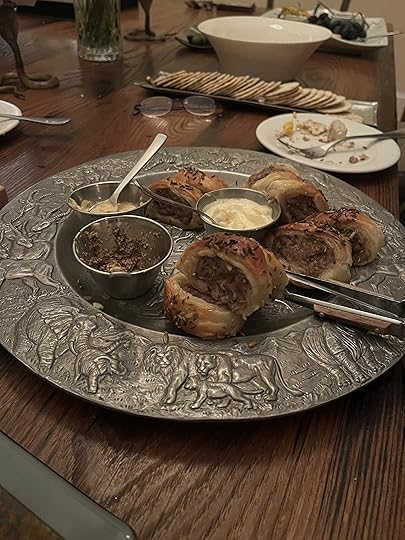 (These are the sausage rolls my husband made. Delish!)
(These are the sausage rolls my husband made. Delish!)And now, we head into the New Year.
As we are all scattered around the globe, the only way I can really ring in the New Year with you all is through story. That’s why I’ve decided to put a bunch of my books on sale for TODAY ONLY (I might extend the sale just a little bit, so check the links, even if you’re late).
I’ll start with THE BONE CHURCH, a historical thriller and my debut novel.
In the surreal and paranoid underworld of wartime Prague, two lovers seek redemption…and a way back to each other.
THE BONE CHURCH on sale for $.99 on Amazon
And on Apple, Nook, and other platforms!

And if you love stories like “A Time-Traveler’s Wife” and “Life After Life,” hold on to your hat! Both BREATH and SAVAGE ISLAND are part of the BREATH series and will have you up all night turning pages.
An ancient curse sends two lovers on a voyage through history…
BREATH is on sale for $.99 on Amazon
And on Apple, Nook, and other platforms!

Niue, 1944
On this remote island in the South Pacific, Angelie is dying of boredom and eager to get involved in the war effort. Then she meets Will…
SAVAGE ISLAND is on sale for $.99 on Amazon!
And on Nook, Apple, Kobo and other platforms, too!
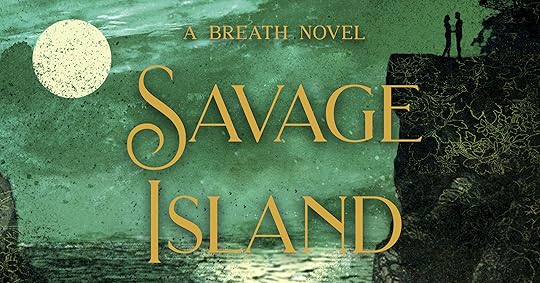
Happy New Year! I hope you enjoy every word!
And if you do, please consider leaving a review on the platform of your choice. No stressing – just a heartfelt sentence or two. Or leave a starred review with no words at all – those are great, too!
Amazon won’t share a novel in its emails to readers until the book has 50 reviews, and on average, about one in every hundred readers leaves a review, so this is a big hill to climb. Your help means a lot!
